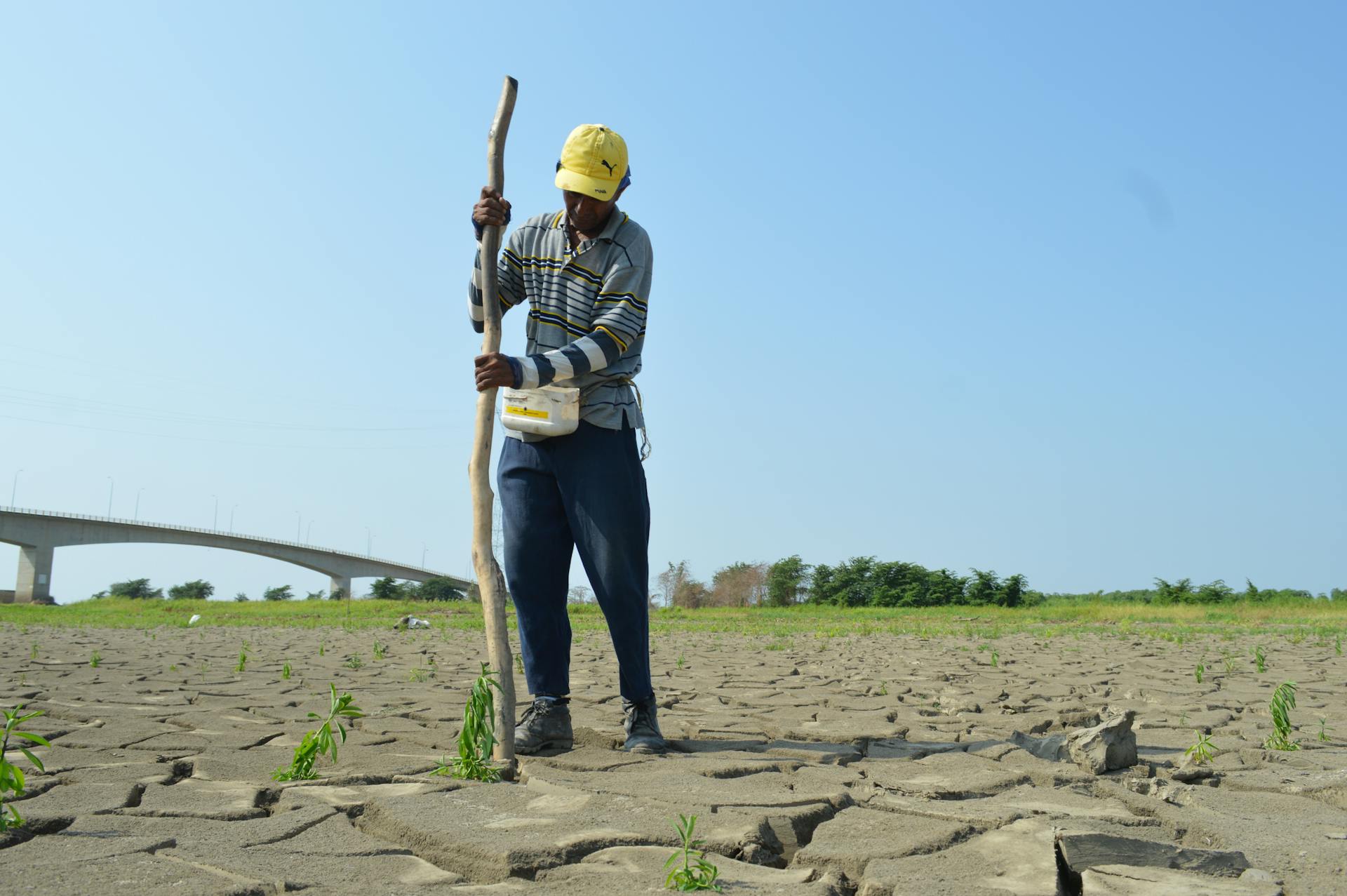
Terraform drift detection is a crucial aspect of infrastructure management that helps prevent configuration drift and ensures consistency across your infrastructure.
Drift occurs when manual changes are made to a resource, causing it to deviate from the intended configuration.
Terraform drift detection can be achieved through various methods, including using Terraform's built-in drift detection feature.
This feature allows you to identify and track changes made to your infrastructure, enabling you to take corrective action and maintain consistency.
What is Terraform Drift Detection
Terraform drift detection is essential to prevent inconsistencies in infrastructure management. Manual changes made by DevOps engineers, such as those required to resolve severity one issues, can lead to drift if not reflected in the Terraform configuration code.
These manual changes can be easy to overlook, resulting in a configuration that no longer accurately represents the actual state of the infrastructure. External processes, like autoscaling actions triggered by cloud providers, can also cause drift.
Resource eviction, a common issue due to cost-saving measures or policy violations, can lead to significant inconsistencies in the infrastructure. This can happen without warning, making it crucial to have a robust drift detection system in place.
To detect Terraform drift, consider the following common causes:
By understanding these common causes of Terraform drift, you can take proactive steps to prevent inconsistencies and ensure your infrastructure management is efficient and effective.
Challenges and Risks
Infrastructure drift can cause problems in several ways, such as development teams unaware of production environment changes seeing applications suddenly crash and deployment projects unexpectedly fail.
Drift can lead to serious security issues, as mission-critical systems may be unwittingly left open to public access and unknown resources may be left unsecured.
Manually tracking infrastructure changes is time-consuming and impossible to scale, making it essential to detect and correct drift to prevent financial implications.
Changes caused by infrastructure drift can generate unnecessary cloud platform costs and increase the cost of remediation and maintenance.
Provisioning of unutilized cloud resources is a significant financial implication of drift, which can waste thousands of dollars in monthly costs due to unused resources.
Manual Changes and Detection
Manual changes are a primary cause of infrastructure drift, and they can be made either deliberately or unintentionally. Deliberate manual changes can be made to address critical production incidents or to tweak network configurations for testing purposes.
Sometimes, users are not even aware they have made a manual change to the infrastructure. Identifying the components managed by Terraform is not always intuitive, and users may perform specific tasks on resources without knowing about Terraform's state file.
Executing scripts that make API calls to the cloud platform is another possible source of unintentional change. If these changes are not ported back into the Terraform configurations, it results in drift, which can lead to various problems, including security issues and wasted resources.
Manual tracking of infrastructure changes and restoring to the correct state or updating configurations to match the current infrastructure is time-consuming and impossible to scale. This is why drift detection is crucial to prevent these issues and ensure the desired state of the infrastructure.
Drift detection can be achieved using tools like Spacelift, which provides drift detection capabilities to any IaC provider. It enables the desired state for application infrastructure across teams, applications, and clouds.
Without a single, shared source of truth, intentional infrastructure changes to remediate incidents could be reverted or temporary changes left unnoticed, wasting thousands of dollars in monthly costs due to unused resources. This highlights the importance of drift detection in maintaining accurate infrastructure state.
Automated Detection and Remediation
Automated detection and remediation is a game-changer for preventing Terraform drift. This approach involves setting up automated pipelines to run terraform plan periodically or after each merge to check for drift. By doing so, you can catch drift issues before they accumulate and cause problems.
You can automate drift detection using tools like GitHub Actions, Jenkins, or GitLab. These tools can run terraform plan and notify engineers of any discrepancies between the actual and desired state. This ensures that drift is detected as early as possible, reducing the time resources run in an unintended state.
Here are some key benefits of automated detection and remediation:
- Prevents drift from accumulating over time
- Allows teams to respond quickly to cost-impacting changes
- Ensures drift is detected as early as possible
To implement automated detection and remediation, you can use tools like Driftctl, which scans your infrastructure state and compares it with the actual state of your resources. This approach helps to quickly identify and address drift, ensuring your infrastructure aligns with the IaC definition.
Tools and Providers
Terraform drift detection can be enhanced with third-party tools. Digger is a self-hostable drift detection tool that detects, notifies, and gives teams the option to auto-remediate configuration drift.
These tools not only help detect drift but also provide insights into notification and remediation that can help optimize your cloud infrastructure.
Some popular third-party tools for Terraform drift detection include Digger and tfsec.
Sources of Infrastructure
Infrastructure drift can be caused by manual changes to infrastructure configurations, which can happen when multiple teams or individuals are involved in managing infrastructure.
One common source of infrastructure drift is human error, where someone makes a change to a configuration that isn't properly tracked or updated.
Infrastructure drift can also occur when multiple environments are not properly synchronized, making it difficult to maintain consistency across all environments.
This can happen when environments are recreated multiple times, and each recreation introduces new changes that aren't accounted for in the original configuration.
Infrastructure drift can also be caused by the use of different tools or processes for managing infrastructure, which can lead to inconsistent configurations and drift.
Inconsistent configurations can also be caused by the lack of a centralized management system, making it difficult to track and update changes across all environments.
Third-Party Tools for Enhanced
Digger is a self-hostable drift detection tool that detects, notifies, and gives teams the option to auto-remediate configuration drift.
Digger and other third-party tools can enhance Terraform's native drift detection with more advanced functionality.
For example, tfsec focuses on security but can also be configured to help identify drift-related misconfigurations.
These tools not only help detect drift but also provide insights into notification and remediation that helps in optimizing your cloud infrastructure.

Here are some third-party tools that can enhance drift detection:
- Digger: A self-hostable drift detection tool that detects, notifies and gives teams to optionally auto-remediate configuration drift
- tfsec: Focuses on security but can also be configured to help identify drift-related misconfigurations.
TestInfra is another testing framework for your infrastructure that can be used to test the state of the infrastructure managed by Terraform. It helps in identifying configuration drifts by asserting the actual state of your infrastructure against expected configurations.
Features like automated drift detection and beautiful job summaries make it easier to track and manage infrastructure changes.
Best Practices and Optimization
Regular drift detection is crucial for identifying issues before they lead to unexpected bills. By regularly running drift detection mechanisms, organizations can ensure their infrastructure matches the desired state.
Drift detection plays a key role in optimizing performance and costs. This is achieved by identifying and addressing issues before they become costly problems.
Running drift detection mechanisms can help prevent large, unexpected bills.
Performance Difficulties
Infrastructure drift can impair system performance due to latency or reduced network throughput.
This can lead to a range of performance difficulties, including underprovisioning of resources and disabling of auto-scaling configurations.

As a result, system performance may slow down, leading to frustrated users and lost productivity.
Drift can also make it challenging to identify, analyze, and investigate the root cause of issues, which can increase downtime and impact the mean time to resolution.
Unknown and untracked changes can lead to a vicious cycle of problems, making it difficult to restore the system to its optimal state.
By regularly running drift detection mechanisms, organizations can ensure that their infrastructure matches the desired state, optimizing both performance and costs.
Optimize Infrastructure Spending
Regularly running drift detection mechanisms is crucial to ensure your infrastructure matches the desired state, optimizing both performance and costs.
Drift detection can help identify and address issues before they result in large, unexpected bills.
Changes caused by infrastructure drift can have wide-ranging financial implications, including unnecessary cloud platform costs and increased cost of remediation and maintenance.
To optimize infrastructure spending, teams should establish drift prevention policies, such as restricting manual changes in production environments through Role-Based Access Control (RBAC).
Here are some effective drift prevention policies:
- Use remote backends (like AWS S3 or Terraform Cloud) to store and lock the state file, ensuring consistency across teams.
- Conducting routine audits of infrastructure costs and usage helps catch anomalies and drift early, reducing the chances of surprise bills.
These policies can help ensure that all infrastructure changes go through Terraform, reducing the chances of drift and surprise bills.
Documentation
Documentation is key to effective Terraform management. The Terraform drift detection documentation provides a comprehensive guide to identifying and managing drift within your Terraform configurations.
It outlines how to use some of Terraform's native features, such as plan and apply, to detect changes not reflected in your Terraform configuration.
Ignore
Infrastructure drift can be a real challenge, especially when it comes to tracking changes and ensuring the accuracy of your infrastructure state. You can use a driftignore file to ignore certain changes and avoid unnecessary notifications.
The default name for a driftignore file is .driftignore, but you can use a custom filename if needed. This is especially useful when you have multiple driftignore files, each representing a different use case.
Ignoring certain changes can help reduce the noise and focus on the important ones. This can save you time and effort in the long run, especially when dealing with large-scale infrastructure changes.
Frequently Asked Questions
What is IaC drift?
IaC drift occurs when the actual state of cloud resources differs from the intended state defined in Infrastructure as Code (IaC) files. This discrepancy can lead to configuration inconsistencies and potential security risks
Sources
- https://www.hashicorp.com/blog/terraform-cloud-adds-drift-detection-for-infrastructure-management
- https://spacelift.io/blog/terraform-drift-detection
- https://atmos.tools/integrations/github-actions/atmos-terraform-drift-detection/
- https://blog.digger.dev/cost-implications-of-infrastructure-drift-reducing-cloud-costs-with-terraform-drift-detection/
- https://docs.driftctl.com/0.34.0/usage/cmd/scan-usage/
Featured Images: pexels.com


